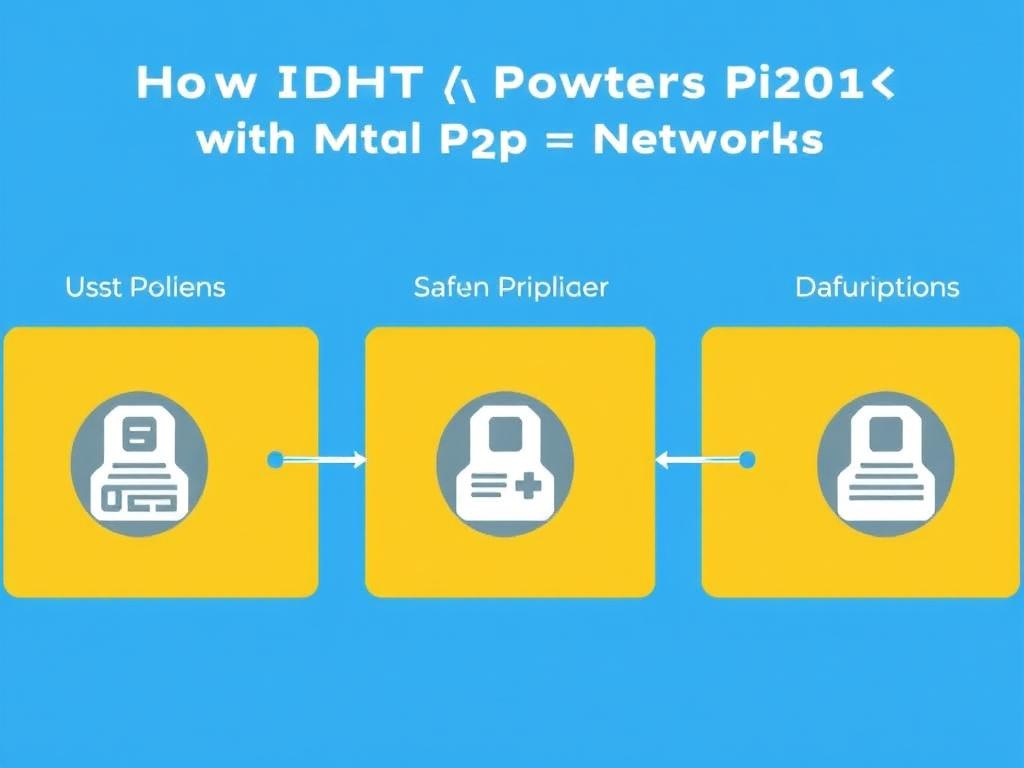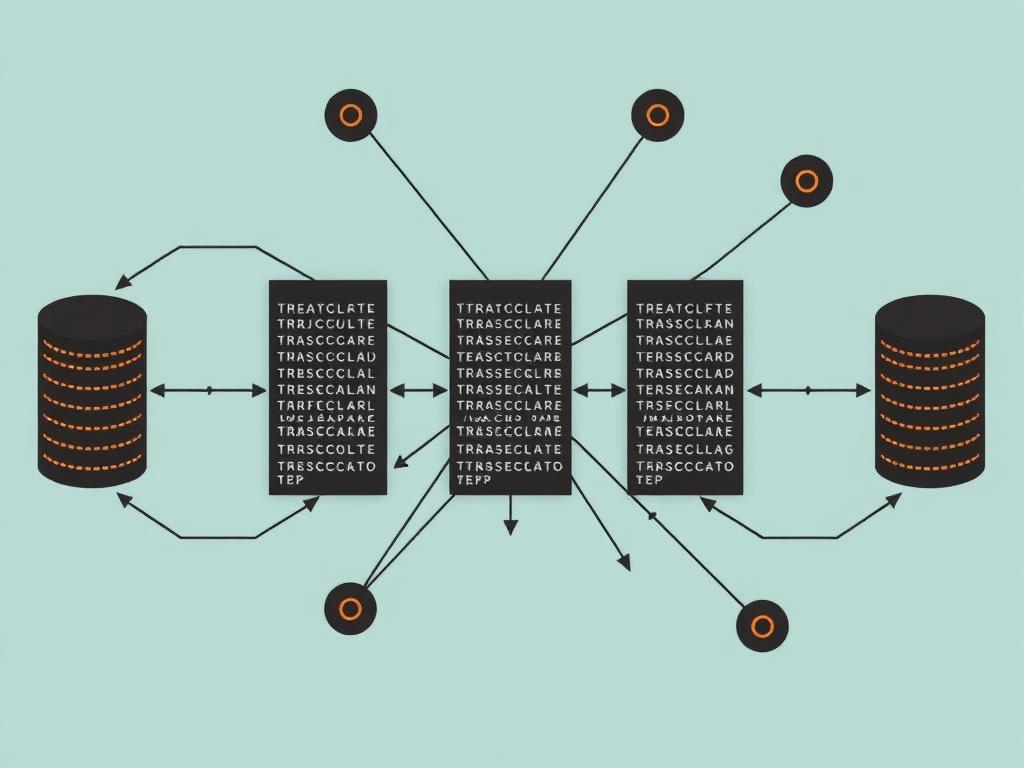How DHT (Distributed Hash Table) Powers P2P Networks: Unlocking the Future of Decentralized Connectivity
Peer-to-peer (P2P) networks have revolutionized the way we share information, making centralized servers less crucial and empowering users to connect directly. At the heart of this revolution lies a powerful technology that many may yet have overlooked: the Distributed Hash Table, or DHT. Understanding how DHT works and why it’s so important helps us appreciate how real-time data distribution and resource sharing happen without relying on a single authority. So, let’s dive into the fascinating world of DHT and uncover how it powers P2P networks, enabling applications like file sharing, decentralized communication, and beyond.
What is a Distributed Hash Table (DHT)?
A Distributed Hash Table is a decentralized system that helps peers in a network locate data efficiently without needing a central index. Unlike traditional hash tables, which store key-value pairs in one place, DHTs spread that responsibility across multiple nodes participating in the network. Each node holds a portion of the data and collaborates with others to find any item stored anywhere in the network.
Imagine you have a massive library with no central catalog, but instead, every reader knows a bit about where some books are kept and how to ask other readers for missing ones. This is the essence of DHT: every participant helps by storing some data and forwarding queries to others, keeping the network scalable and robust.
How Does a DHT Work?
At the core of DHT functionality lies hashing. Each piece of data and each node receive unique identifiers generated through hash functions, usually cryptographic hashes like SHA-1. These identifiers create a structured overlay network, where nodes and data points are mapped onto a keyspace, often visualized as a ring or a multi-dimensional space.
When a node wants to find a piece of data, it doesn’t search the entire network. Instead, it leverages the DHT algorithm to route the request to the node closest to the desired data’s key. This process usually takes logarithmic time relative to the network’s size, making lookups efficient even in huge networks.
Key Operations in DHTs
- Storing: A node inserts a (key, value) pair into the DHT by determining which node is responsible for that key and passing the data there.
- Lookup: To retrieve data, a node queries the DHT to find the responsible node for the given key and requests the data.
- Node Join and Leave: Nodes may enter or exit the network dynamically. The DHT protocol ensures re-distribution of stored keys to maintain completeness and consistency.
Why is DHT Crucial for P2P Networks?

Traditional networks rely heavily on centralized servers to manage resources and maintain directories. This architecture is vulnerable to failure points and censorship. Peer-to-peer networks, on the other hand, thrive on decentralization, but they need a method to find resources quickly and reliably across many unpredictable nodes. Distributed Hash Tables fill this role superbly.
By allowing any participant to contribute to storage and lookup operations, DHTs provide scalability—the network can grow without bottlenecks. They also offer high resilience to node failures because data is distributed and can be replicated. Plus, DHT-based networks can handle churn, meaning peers joining and leaving continuously, ensuring continuous availability of data.
Popular P2P Protocols Using DHT
Several well-known P2P applications utilize DHT to great effect:
| Protocol | Use Case | DHT Implementation |
|---|---|---|
| BitTorrent | File sharing | Mainline DHT |
| IPFS (InterPlanetary File System) | Content-addressed file storage | Kademlia-based DHT |
| Ethereum | Blockchain networking | Kademlia DHT variant |
These protocols use the DHT to help peers discover each other without centralized trackers or servers, maintaining the decentralized ethos of P2P networks.
DHT Algorithms: The Backbone of Distributed Lookups
Not all DHTs are built equally. Several algorithms define how nodes are structured, how keys are assigned, and how routing is performed. Some of the most famous DHT algorithms powering P2P networks include:
- Kademlia: Probably the most widely adopted, Kademlia uses XOR metrics for distance and parallel lookup procedures that reduce latency.
- Chord: Uses a ring topology where keys and nodes are assigned positions in a circular keyspace, with efficient finger tables for fast routing.
- Pastry: Deploys prefix-based routing tables to ensure that messages are forwarded closer to the target node in each step.
- CAN (Content Addressable Network): Maps nodes into a multidimensional Cartesian space, distributing keys accordingly and moving towards target coordinates.
Each algorithm has trade-offs regarding lookup speed, complexity, fault tolerance, and ease of implementation, but all share the core principle of distributing responsibility and query routing among peers.
The Role of DHT in Resource Discovery
Efficient resource discovery is one of the biggest challenges in P2P systems. Unlike traditional client-server models, there is no central registry to query for content availability. Here, DHTs act as a decentralized index, enabling nodes to locate data or services quickly by hashing resource identifiers to keys.
For example, in BitTorrent, when you want to download a file, your client uses the DHT to discover other peers that have parts of the file, without needing a tracker. This direct peer discovery reduces dependence on centralized servers and enhances the overall reliability of the network.
Challenges and Limitations of DHTs
While DHTs are powerful, they are not without challenges. One primary issue is security. Because the system is fully decentralized, malicious nodes can inject incorrect data, launch eclipse attacks to isolate nodes, or disrupt routing tables. Hence, many P2P networks implement additional verification and redundancy mechanisms to mitigate these risks.
Another challenge is handling network churn. When many nodes join or leave frequently, the DHT must constantly update its routing tables and redistribute keys, which can lead to increased network traffic and temporary unavailability. Despite this, modern DHT protocols are designed to handle churn gracefully.
Improving DHT Performance
Optimizing DHTs involves balancing routing efficiency, data replication, and security. Some improvements include:
- Replication: Storing multiple copies of data across nodes to increase fault tolerance.
- Caching: Temporarily storing queried data closer to requesters to reduce lookup latency.
- Access Control: Implementing cryptographic identities and signatures to verify legitimate nodes.
- Load Balancing: Distributing keys evenly among nodes to prevent hotspots.
These enhancements ensure that DHT-powered P2P networks remain robust and efficient as they scale.
Future of DHT and Peer-to-Peer Networks

The relevance of DHTs continues to grow in emerging technologies such as decentralized finance (DeFi), blockchain applications, distributed storage, and even IoT systems. As society shifts towards decentralization—with more users valuing privacy and control—DHTs will play a crucial role in enabling trustless, censorship-resistant communication networks.
Innovations combining DHT with cryptographic protocols, such as secure multi-party computation and zero-knowledge proofs, are paving the way for more secure and private resource sharing. The synergy between DHT and these advancements promises a future where decentralized applications become the norm rather than the exception.
Summary Table: DHT Benefits and Challenges
| Benefits | Challenges |
|---|---|
| Scalable resource lookup in large networks | Susceptible to malicious node attacks |
| No central points of failure | Handling high network churn is complex |
| Efficient decentralization | Overhead in maintaining routing tables |
| Enables peer discovery without centralized servers | Security and trust require additional layers |
Conclusion

Distributed Hash Tables stand as a cornerstone technology in powering peer-to-peer networks, enabling decentralized, scalable, and efficient resource discovery and sharing. By distributing data storage and routing responsibilities among all participating nodes, DHTs remove the need for central servers, increasing resilience and lowering censorship risks. Though not without challenges—such as security concerns and network churn—ongoing advancements continue to enhance their robustness, paving the way for more widespread use in blockchain, decentralized web, and beyond. As P2P networks continue to evolve, the fundamental role of DHT in connecting peers and distributing information efficiently remains vital, truly unlocking the power of modern decentralized connectivity.






